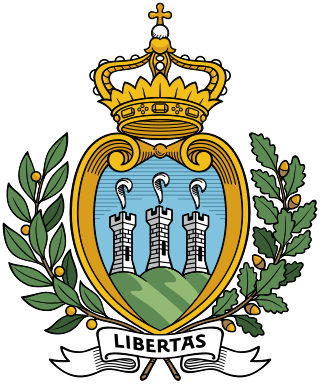
The National Bloc is a secular political party in Lebanon that was founded in 1943 as a parliamentary bloc for the 1943 Lebanese elections by Émile Eddé but was later formed as a political party in 1946.
This list of presidential elections in the Philippines includes election results of both presidential and vice presidential elections since 1899 with the candidates' political party and their corresponding percentage.

Folketing elections were held in Denmark on 23 March 1943 alongside Landsting elections, except in the Faroe Islands where they were held on 3 May. They were the first and only parliamentary elections held during the German occupation, and although many people feared how the Germans might react, they took place peacefully.
General elections were held in Lebanon on 25 May 1947, with a second round in some constituencies on 1 June. Independent candidates won the majority of seats. Voter turnout was 61.5%.
General elections were held in Lebanon on 15 April 1951, with a second round in some constituencies on 22 April. Independent candidates won the majority of seats. Voter turnout was 54.7%.
General elections were held in Lebanon between 12 July and 9 August 1953, the first under the new electoral system which allowed candidates to win with a plurality of votes, rather than requiring a second round. Independent candidates won the majority of seats. Voter turnout was 50.0%.
General elections were held in Lebanon between 9 and 23 June 1957. Independent candidates won the majority of seats. Voter turnout was 53.2%.

General elections were held in Lebanon between 12 June and 2 July 1960. Independent candidates won the majority of seats. Voter turnout was 50.7%.
General elections were held in Lebanon between 5 April and 3 May 1964. Independent candidates won the majority of seats. Voter turnout was 53.0%.
General elections were held in Lebanon between 24 March and 7 April 1968. Independent candidates won the majority of seats, although many of them were considered to be members of various blocs. Voter turnout was 49.6%. Politically the election was a confrontation between the mainly christian Tripartite Alliance and Chehabists candidates.
General elections were held in Lebanon between 16 and 30 April 1972. Independent candidates won a majority of seats, although most of them were considered members of various blocs. Voter turnout was 54.4%.
General elections were held in Lebanon between 23 August and 11 October 1992, the first since 1972. Independent candidates won the majority of seats, although most of them were considered members of various blocs. Voter turnout was 30.3%.
General elections were held in Lebanon between 18 August and 15 September 1996. Independent candidates won the majority of seats, although most of them were considered members of various blocs. Voter turnout was 43.3%.

General elections were held in Lebanon between 27 August and 3 September 2000 to elect the 128 members of the Parliament of Lebanon. Independent candidates won the majority of seats, although most of them were considered members of various blocs. Voter turnout was 40.5%.

General elections were held in the Dominican Republic on 16 May 1942. Rafael Trujillo, the country's de facto leader since 1930, was the sole presidential candidate and was returned to office unopposed. His Dominican Party won every seat in the Congressional elections.

Legislative elections were held in Mexico on 15 August 1943. The Party of the Mexican Revolution won all 147 seats in the Chamber of Deputies.

General elections were held in San Marino on 5 September 1943. After the former ruling party, the Sammarinese Fascist Party had been dissolved on 28 July, the "Lista Unica" was formed by a coalition of political leaders and non-partisans. It won all 60 seats.
Federal elections were held in Switzerland on 31 October 1943. The Social Democratic Party emerged as the largest party in the National Council, winning 56 of the 194 seats.
Eleven referendums were held in Switzerland during 2001. The first three were held on 4 March on popular initiatives on joining the European Union, lowering medicine prices and lowering the urban speed limit to 30 km/h in most places. All three were rejected by voters. The next three referendums were held on 10 June on two separate amendments to the federal law on the Swiss army and on a federal resolution on abolishing the requirement for a permit to establish a diocese, all of which were approved.
Parliamentary elections were held in Colombia in February 1943 to elect the Chamber of Representatives. The Liberal Party received the most votes.






